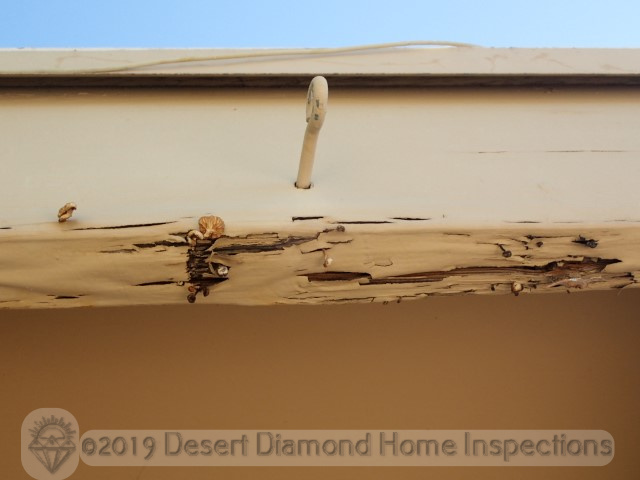Exterior maintenance is the third article in our series of top 10 home maintenance tips. These tips are based on our experience from inspecting homes in Tucson where we see certain issues on a regular basis. Issues that could have been prevented with some easy and affordable proactive maintenance. Proactive home maintenance helps prevent unpleasant surprises and major damage and keeps maintenance and repair costs down. We hope you find these tips helpful and use them to keep your home in good shape.
Exterior maintenance
Our third home maintenance tip deals with maintaining the exterior of your home. No matter what the exterior walls of your home are clad with, it will require maintenance for three reasons:
- Stay cosmetically appealing.
- Prevent moisture damage to the exterior
- Prevent moisture intrusion into the home
The Arizona sun is very powerful. It does not take very much time to deteriorate and damage building materials. Just as powerful are our monsoon storms and the massive amounts of water pouring on our homes. Regular maintenance is essential to prevent unpleasant surprises and expensive repairs.
General maintenance
No matter what the exterior is made of, there are several things you should do on a regular basis for exterior maintenance:
- Trim back or remove anything that is touching the exterior. Vegetation can either directly damage the stucco by rubbing on or sticking to it, or by attracting pests that cause damage.
- Clean any unsightly stains or dirt on the exterior with water and soap.
- Visually check for gaps, holes, or damage.
Stucco
Stucco is very common here in Tucson, mainly on newer homes. While it can last a very long time, it requires maintenance. This means annual visual inspections of the stucco all around your home. If your home has a flat roof with parapet walls, make sure to examine those as well.
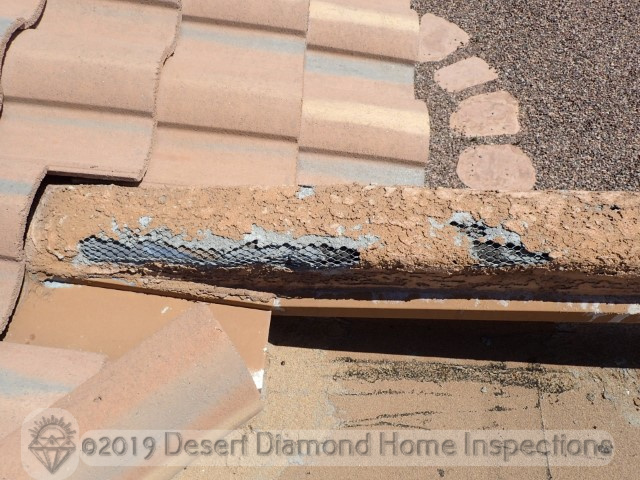
Look for any physical damage to the stucco such as cracks, chips, and missing chunks. Hairline cracks are normal in stucco, especially at window and door corners. They happen as a result of slight movement of the wood frame underneath, extreme temperature changes, etc. They are usually not structural. You can patch hairline cracks with elastomeric caulk and paint. Just don’t be too surprised if they return some time down the road.
Stucco can also experience more significant damage. For example, from hail, tree or bushes rubbing against it, animal activity, careless human activity, etc. Depending on the extent of the damage, you might have to involve a qualified stucco specialist for repairs.
Wood-frame houses normally have a gap of several inches between the bottom of the stucco and the ground. At the bottom of the stucco is a metal piece called a weep screed. It allows moisture to drain from the stucco. Check the condition of the weep screed and ensure that it is not blocked.
On masonry block houses the stucco usually extends all the way to the ground without a weep screed. Monitor the bottom of the stucco and keep it painted and sealed.
Every five to ten years, depending on the condition and quality of the existing paint, repaint the stucco.
Siding
Many houses in Tucson have siding such as T-111. Siding can last a long time, but – again – only with proper maintenance. Siding is very susceptible to moisture. If moisture gets into it, it deteriorates quickly. Specifically, it swells up and starts to rot and fall apart, leaving replacement as the only option.
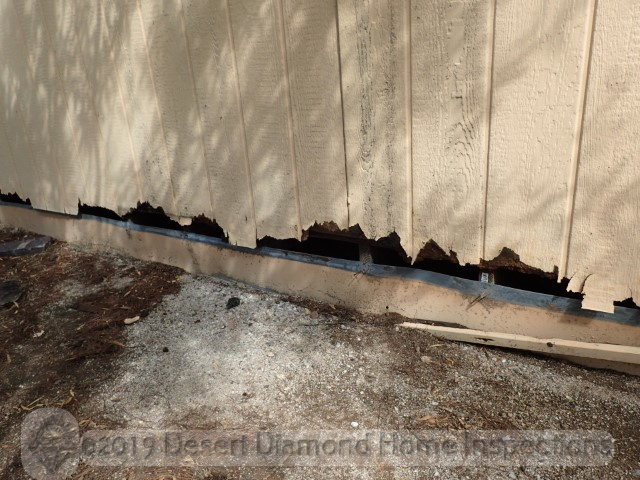
Ensure that there is a gap of several inches between the ground and the bottom of the siding. This prevents moisture from soaking in from the bottom. Seal any gaps in the siding and adjacent trim that could allow moisture intrusion.
Every three to five years, depending on the condition and quality of the existing paint, repaint the siding. It is much easier and cheaper to repaint the siding than having to replace it.
Brick
Many older homes are either constructed with brick walls or brick veneer. Brick lasts for a very long time, but it also – surprise – requires maintenance.
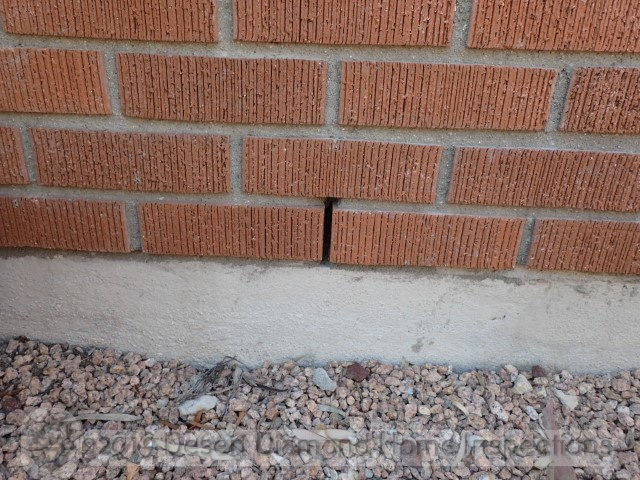
Examine the brick for damage and replace any damaged bricks. Check the mortar between the bricks. Replace any damaged or missing mortar to maintain the brick wall integrity and prevent moisture intrusion.
Adobe brick
There are many older homes in Tucson with adobe brick walls for that authentic southwestern look. Adobe brick is soft and crumbly. It is easily damaged and can deteriorate quickly.

Examine the adobe brick for damage and replace any damaged bricks. There are specialists for adobe brick that can help with repair and maintenance. To preserve adobe brick and slow down deterioration, you can also apply a spray coating.
Exposed wood
Any wood that is exposed to the elements requires regular maintenance such as painting or sealing. If left unattended for too long, it will require repair or replacement.
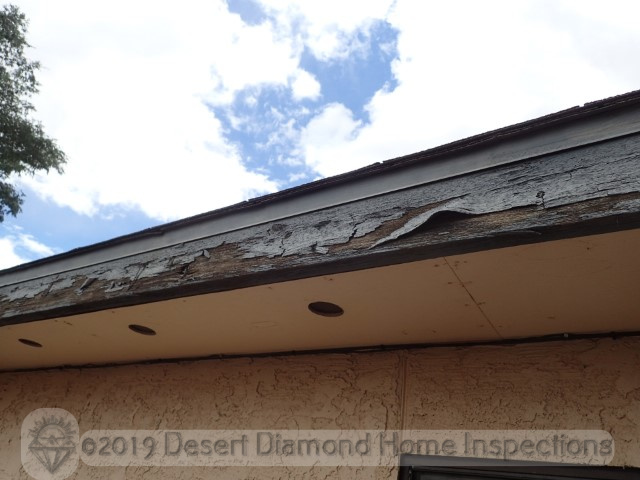
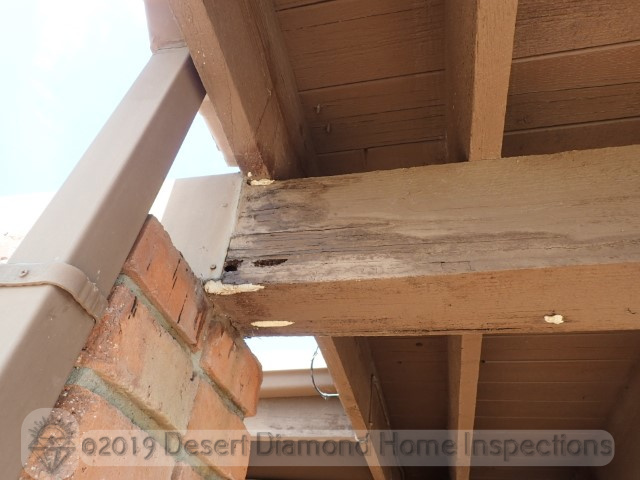
This includes fascia, bird blocks, vigas, beams, joists, and posts at the exterior of the house, patio, car ports, pergola, etc.
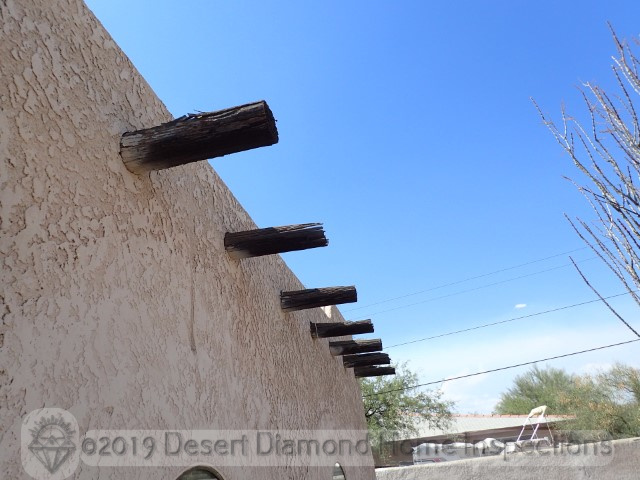
Examine all wood at the exterior for peeling paint, wood rot, or other damage.
When
Put an annual reminder on your calendar for March or April to inspect the exterior of your home. You want to do exterior maintenance before monsoon season starts for two reasons:
- Confirm that the exterior is in good shape before the storms start, and have peace of mind that you won’t have to worry about leaks.
- If the exterior needs repairs, it will be easier and cheaper to schedule a contractor during this time.
Conclusion
Annual exterior maintenance of your home is extremely important. If you spend a little bit of time and money every year to keep the exterior of your home clean and in good repair, it will last a long time and keep you and your house dry. It will also prevent unpleasant surprises such as unexpected leaks and resulting repairs that could cost thousands of dollars.

